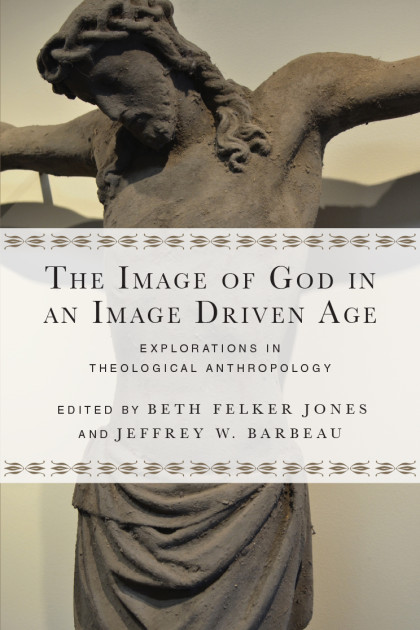
Imago Dei: An Introduction (Part 1 of 5)
Imago Dei. These two Latin words hold centuries of theological reflection, numerous perspectives, and potentially world-changing implications. The idea that humanity is made in the image of God and somehow bears that divine image is a bold, revolutionary doctrine. The specifics of what this means, however, are more difficult to nail down and sometimes even more difficult to apply practically. Theologians throughout the history of the church have proposed various understandings of the image of God and how it is present in humanity, but this is not a topic for religious scholars only.

This is to be the first in a series of five blog posts on the subject of the imago Dei, focusing particularly around a book called The Image of God in an Image Driven Age: Explorations in Theological Anthropology, edited by Beth Felker Jones and Jeffrey W. Barbeau (Downers Grove, IL: InterVarsity Press, 2016). The fascinating thing about this book is the way it brings multiple perspectives to this important Christian belief. This is a collection of essays written by academics in various fields, not just biblical studies and theology, but also in arts, literature, ethics, history, philosophy, and communication. The subtitle of the book, “Explorations in Theological Anthropology,” opens a deep question of human identity. While we may not have used the phrase “theological anthropology” in casual conversation, at its root it addresses the basic query of what it means to be human in light of who God is. Who is God? Who are we? What is our role in the world God has created? How are we to understand ourselves; how are we to understand and relate to others; how are we to understand and value the purpose of each human life?
Rather than writing a book review for this collection of essays, I will be engaging the ideas of the book while raising questions of how we might each think through and apply the perspectives this book provides. The Image of God in an Image Driven Age addresses a diverse array of topics, but is categorized into four major sections: Canon, Culture, Vision, and Witness.
- Canon explores what the Bible says about the image of God;
- Culture exposes the conflicting messages present in our culture about the nature and value of humanity;
- Vision examines the potential for the doctrine to change our perception of ourselves, others, and our world;
- Witness exhorts believers to live distinctive lives in light of the image bestowed upon us and our fellow humans.
All four of these themes are meant to connect with the primary tension of the book outlined in the title: what does it mean for Christians to profess that humanity is made in the image of God, when we live in a world that views image as something superficial while also glorifying that veneer as essential to human value? The four subsequent posts in this series will discuss the four sections of the book in turn. My goal is to begin a conversation among the readers of this blog, recognizing that we come from diverse backgrounds and disciplines, but that we also share a common faith that informs our lives and work.
Image courtesy of LubosHouska at Pixabay.com
Michael Huerter is a graduate of Messiah College, and is currently pursuing a Master of Divinity and a Master of Music in Church Music at Truett Seminary and Baylor University in Waco, Texas. He is passionate about making music, and particularly enjoys jazz. He also enjoys being an uncle to his two nieces and one nephew, and a “dad†to his 110-lb Shiloh Shepherd, Tinkerbell. His academic interests include worship theology and the intersection of faith, culture, and storytelling, and an item on his bucket list is to compose music for a soundtrack.

Leave a Reply